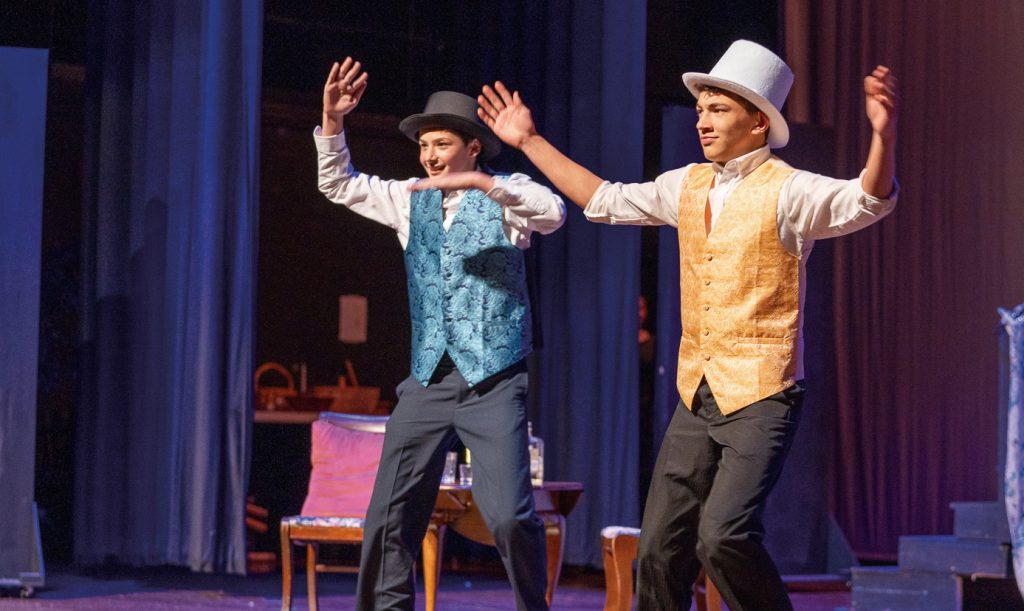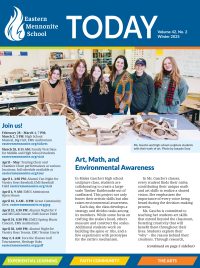This school year we celebrate 20 years in the fine arts addition at Eastern Mennonite School, built to house the auditorium, art studio, and the band and choir rooms. Students, families, and the broader community have enjoyed years of performances, arts, and celebrations in this space. We again express gratitude to the original board and donors who made this space possible. Thank you to everyone who has contributed to keeping the arts vibrant and alive at EMS!
Collaborative Art that Builds Community
“Finding your own voice as an artist is to express your ideas and experiences by selecting the materials and techniques to bring these narratives to life,” says Erin Williams, cherished EMES art teacher. “Collaborative art introduces an additional dimension to the process—not only do you represent your own creative thoughts, but you also learn to make space for someone else’s vision.”
Ms. Williams often references a concept by EMES principal Maria Archer. Ms. Archer highlights that hospitality means not just making space for others but embracing the notion that the space will evolve and be co-created by someone else’s presence. Ms. Williams reflects, “Through collaborative art, students discover how to lend their unique voice and vision to the process, all while valuing each classmate’s ideas equally. They come to realize that the artwork wouldn’t exist in the same way without every individual’s contribution.” Each fall, K-5th grade art classes at EMES embark on the journey of crafting a masterpiece together, acquiring essential skills that extend beyond the canvas. Effective communication, active listening, negotiation, and conflict resolution are some of the skills students employ. Collaborative art done in this way embodies the spirit of EMES—imperfect, at times messy, yet full of growth and understanding.
This year’s collaborative experience transcended mere art creation. As the students admired their final creation, they recognized that they had built more than just a piece of art—through the process of creating they made something beautiful and at the same time, a stronger sense of community.

3rd Grade collaborative artwork
The sample above shows part of the 3rd grade artwork.
- Title: The Dragon’s Colorful Crazy Sunset
- Size: 24 ”x 18”, Medium: paper, acrylic paint
3rd grade artists each painted six squares of paper, then used a variety of tools such as spools, wooden blocks, and lids to create patterns and implied textures. Students adhered their individual pieces onto a wooden panel, intermingled with those of their classmates, arranging them into a quilt pattern.
“Try again, fail again, fail better”
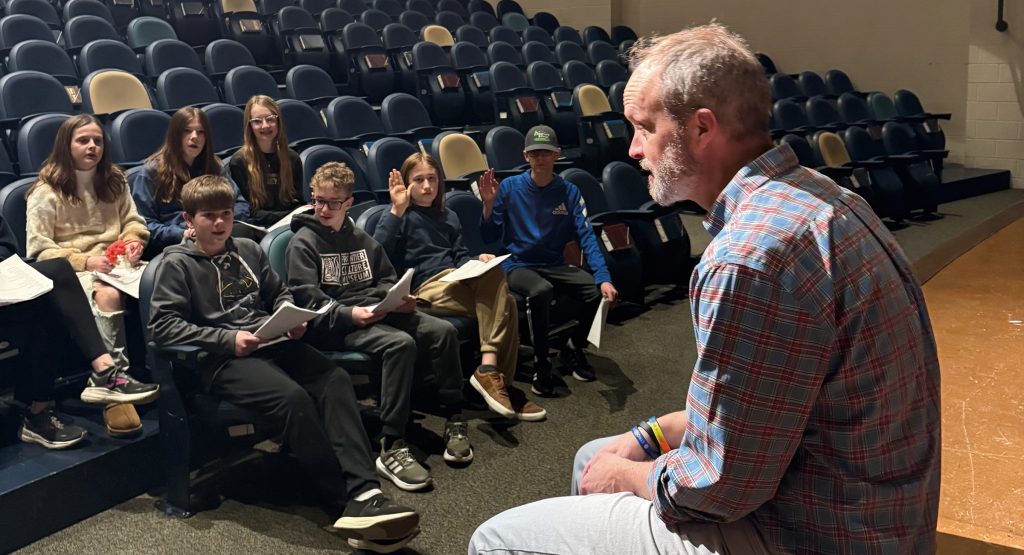
Mark Gornto, English and Theater teacher
Mark Gornto, English and Theater teacher, has an innovative approach to the subjects he teaches. “Theater exists on paper first,” he stresses, highlighting the need to understand scripts as literature before transitioning to performance. He believes that analyzing and interpreting a script or text is key to successfully bringing it to life on stage.
Students may initially feel hesitant to actively engage with scripts and theater. He reminds the students it’s called a “play” because they get to play! But it’s also so much more than that. He shares Samuel Beckett’s famous quote, “Try again, fail again, fail better,” which underscores the value of taking risks in his classes. He encourages his students to bring their true selves into their work, creating an environment where creativity and vulnerability are prioritized over performance and results.
Mark finds motivation in change and the adaptability it requires, drawing inspiration from watching the students learn what they are capable of. Through this unique curriculum, students not only learn about theater but also gain insights into themselves. While these classes are still new, Mark can already see the benefits.
As a member of the equity work group at EMS, Mark is dedicated to integrity and responsibility, having helped craft a statement of belonging for EMS. He believes in the school and advocates for conflict and accountability as pathways for progress toward that goal. He hopes for more opportunities for exploration and bold choices so that students can continue to grow.
Music for All in the EMS Tradition
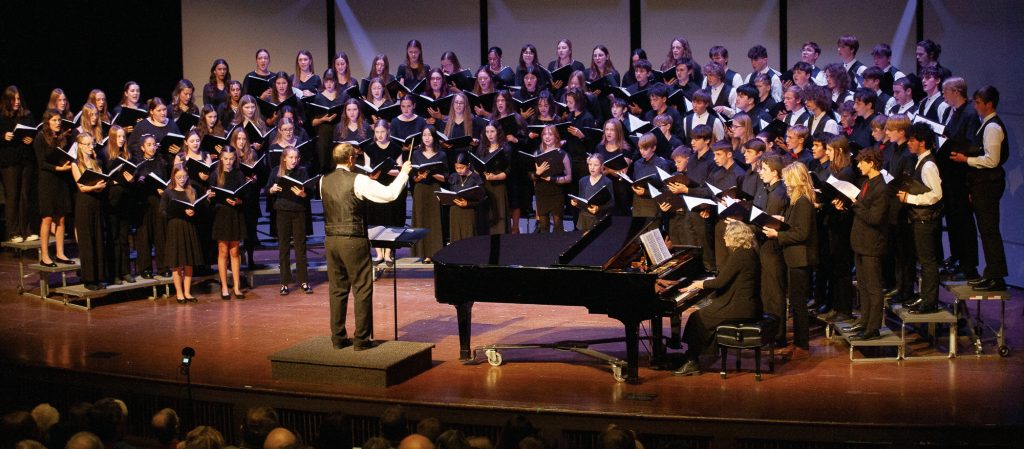
Choral Christmas Worship Service
At EMS the music program thrives as a dynamic center of creativity and collaboration, thanks to 6-12th grade educators like Maria Lorcas, Nick Gardner, and Jared Stutzman. Their commitment to developing skilled musicians AND responsible citizens fosters a unique environment where students can flourish. The music teachers agree that students who can both sing and play an instrument gain a richer understanding of music as a whole.
Maria Lorcas, strings teacher, is influenced by her upbringing in Venezuela and the principles of El Sistema—a music education initiative aimed at fostering social change. Maria believes music education should go beyond technical skills: it should also build character and citizenship. “It’s not just teaching the content; it’s about being a good citizen, a good person,” she emphasizes.
Nick Gardner reinforces this idea, highlighting the program’s inclusivity. “For me, EMS is really surprising in that our music program offers so much to our students,” he notes. Unlike many local schools, EMS guarantees that every middle school student receives daily music instruction, fostering a love for music from a young age. Nick enjoys witnessing his students’ growth.
The music program at EMS is known for its excellence defined by its “music for all” philosophy, as articulated by Jared Stutzman. This approach values broad participation enabling students of various skill levels to engage with music. Jared’s background in teaching strings before becoming the choir director provides him with a unique perspective on the connection between vocal and instrumental music.
Beyond the classroom, communal singing during chapels fosters a sense of belonging among students. Music here is not merely an individual pursuit but a shared journey. Each person possesses a unique voice, and when we unite our vocal talents, our individual and collective experiences create a stronger, more beautiful, and truthful community. We hope you remember how music in the EMS tradition has enriched your life.
The Magic of Dessert Theater
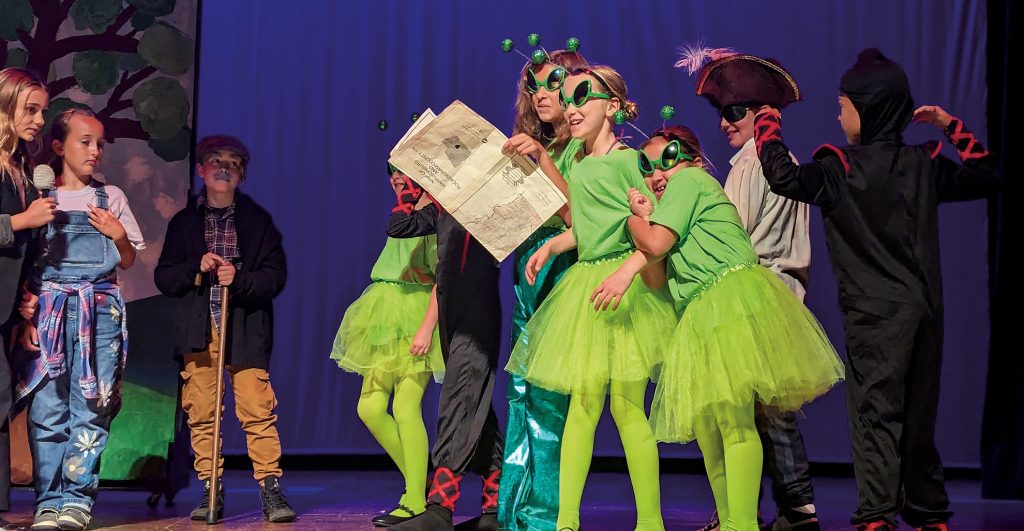
Dessert Theater performance
Every fall, fourth and fifth grade students, led by the passionate Joy Anderson, embark on a journey that involves painting sets, crafting costumes, memorizing lines, and mastering technical aspects. All this work culminates in a Dessert Theater performance for their families, teachers, and peers.
This beloved tradition is more than just an elementary play; it is an integral part of the EMS curriculum that fosters the holistic development of its students. “It’s important to me that kids start right away seeing theater as an integrated art,” says Joy, who serves as both director and music teacher. Her dedication to nurturing young talent shines through every aspect of the production.
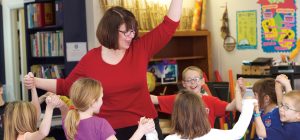
EMES Music Teacher Joy Anderson, February 23, 2017 (Photo by Andrew Gascho)
What makes this event truly remarkable is the level of professionalism and creativity displayed by the students. First-year parents often leave the performances with a look of astonishment on their faces, seeing their children take leadership on stage far beyond their expectations. Under Joy’s expert guidance, along with the support of classroom teachers and EMES staff, these students create a memorable performance that leaves a lasting impression.
Mark Gornto, Middle School English and Theater teacher, assists the students with theater lighting, sound, and the technical aspects of the show. He has a personal connection to this work as an actor who worked on sets as well. Tech students learn that they are creating the world that supports the show, giving creative input without being in the spotlight. Plus, who doesn’t love to push buttons?
